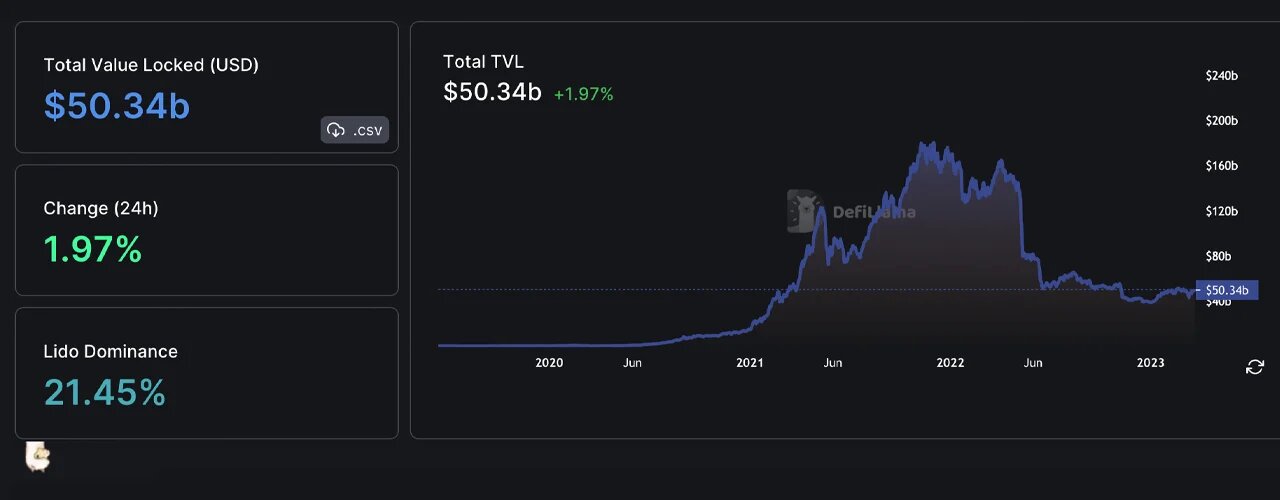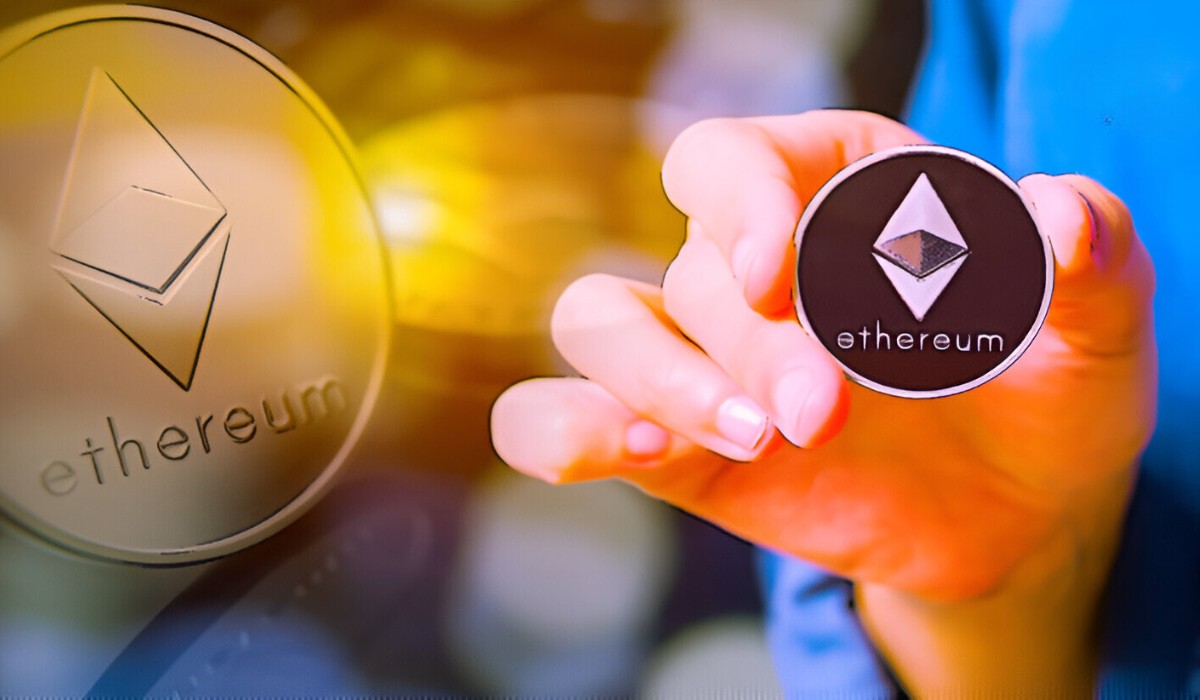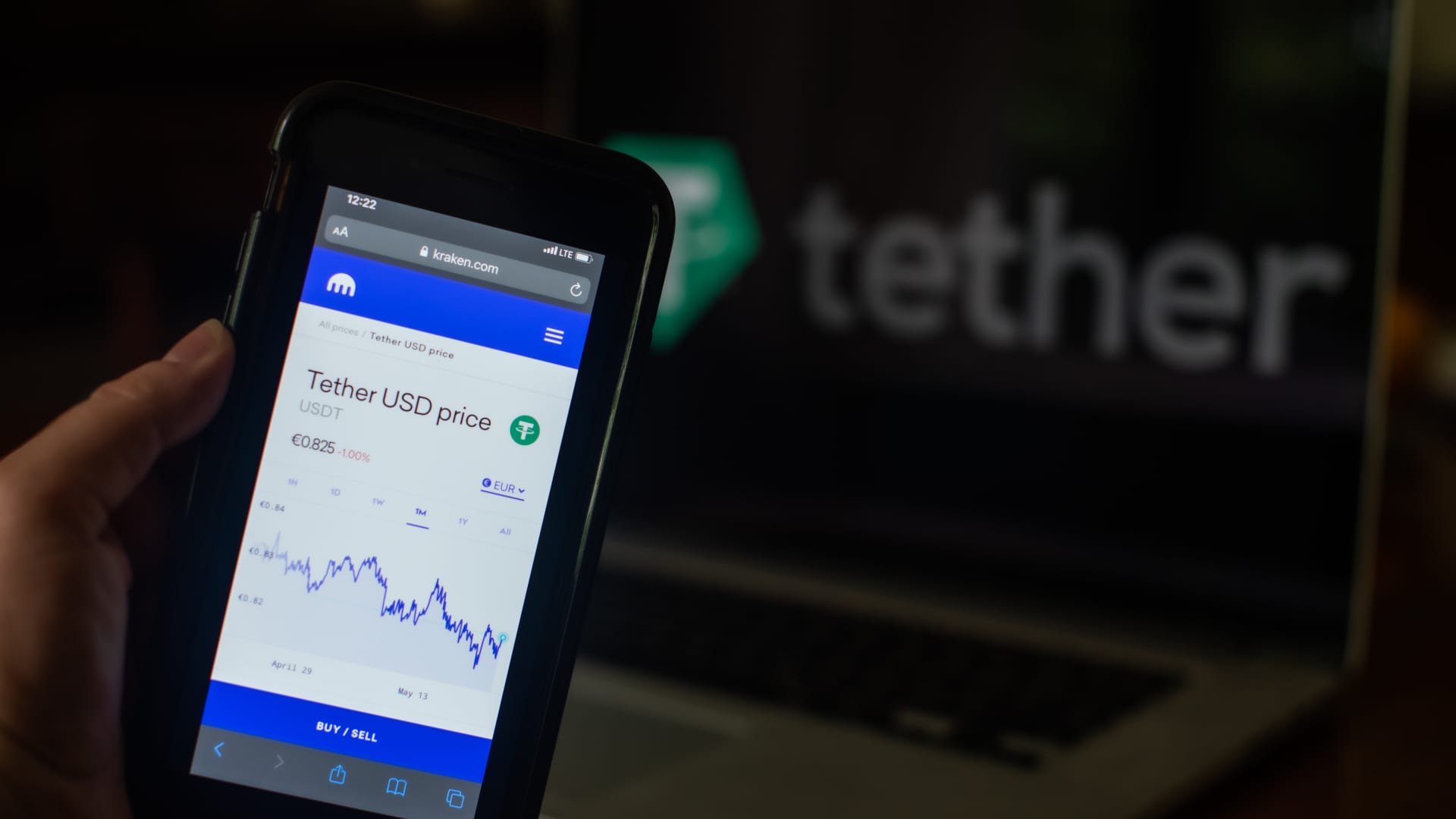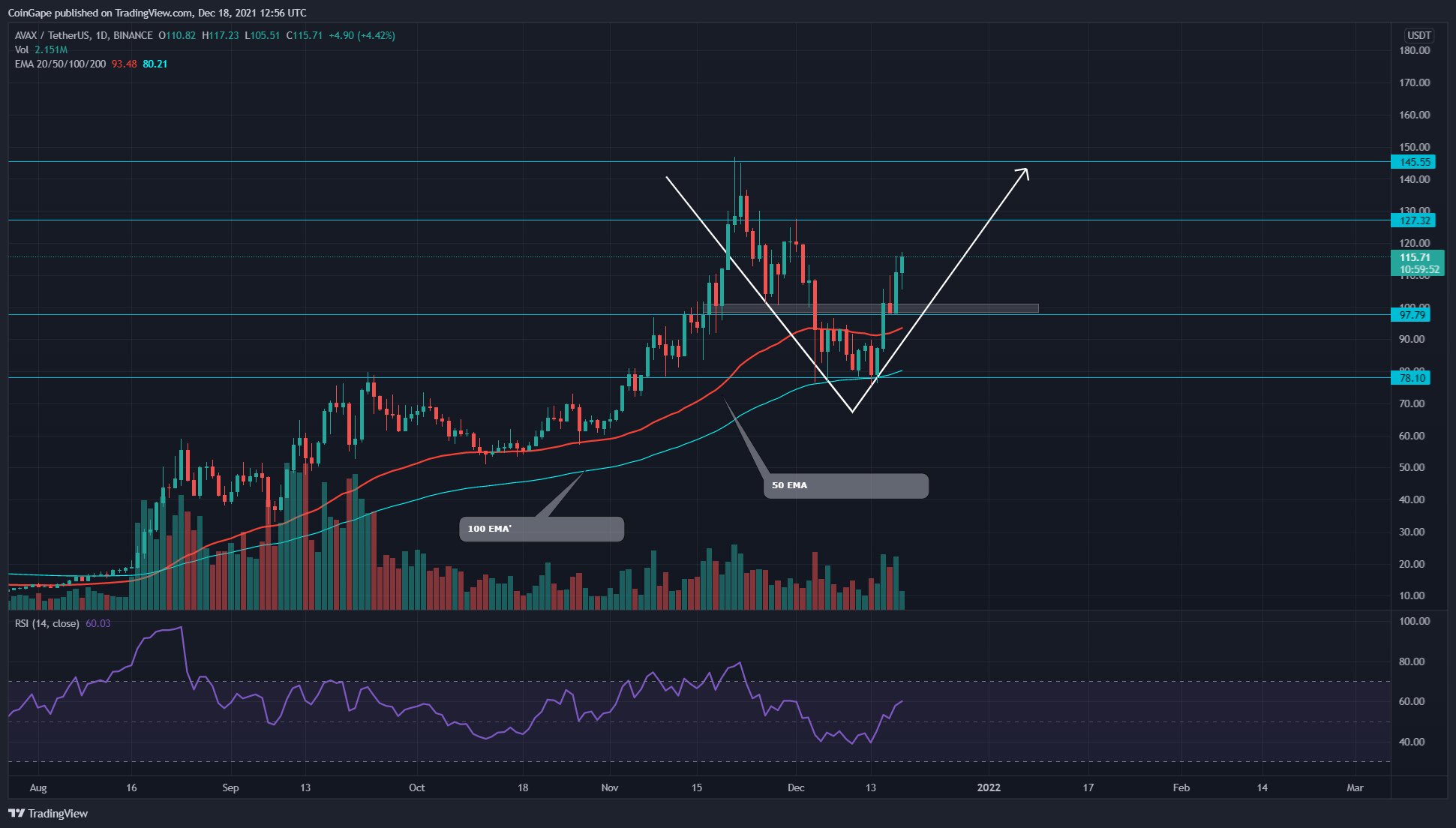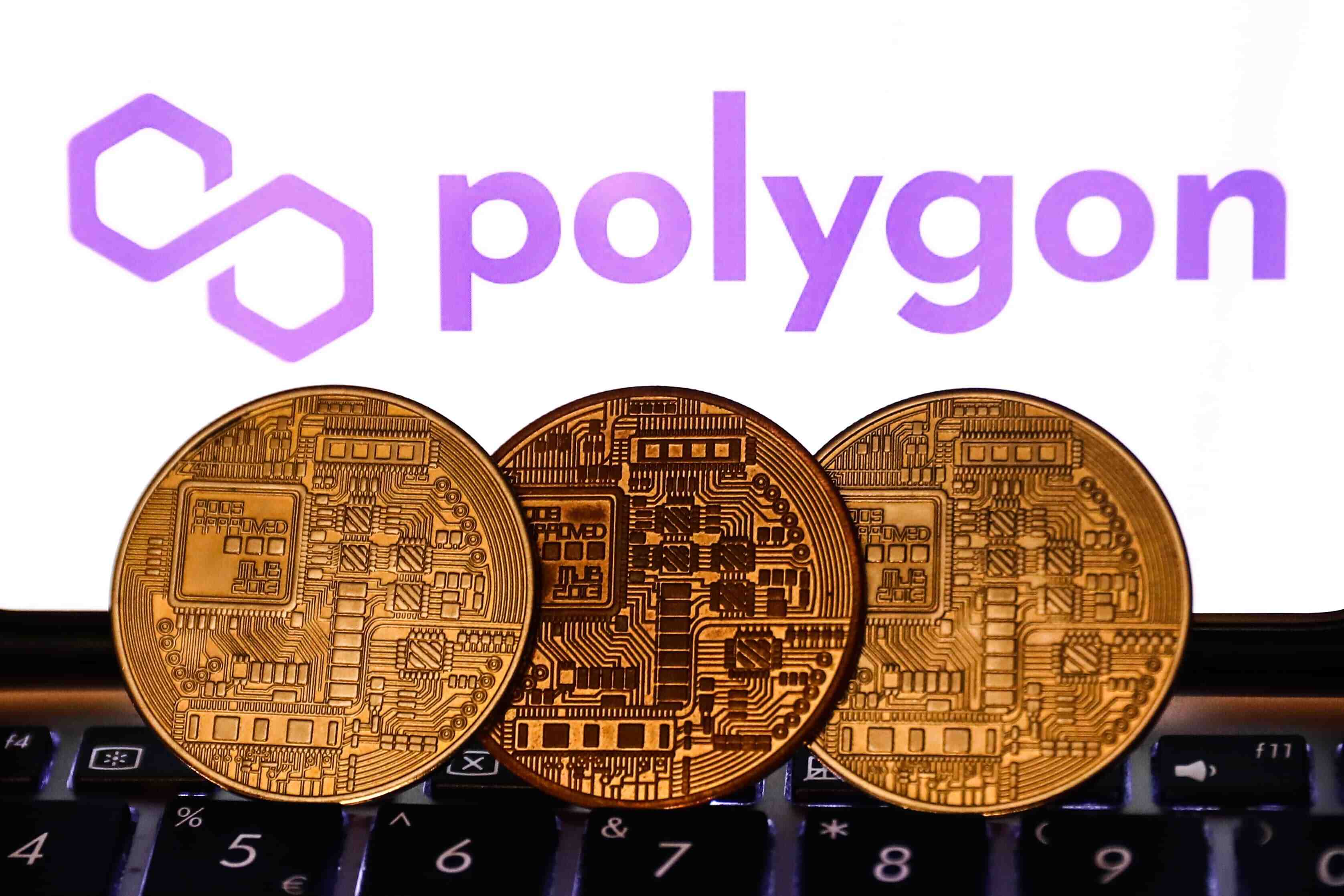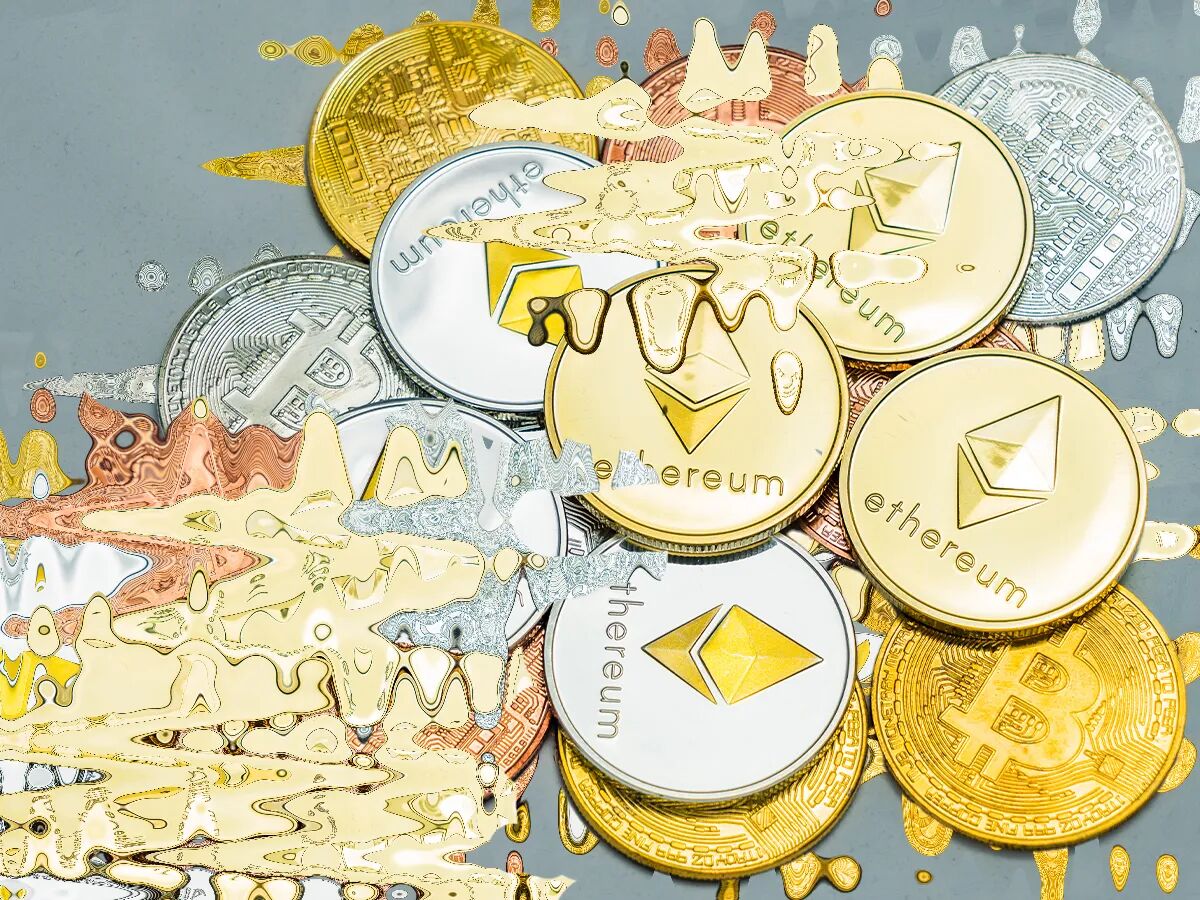Introduction
Cryptocurrency has revolutionized the financial industry, offering decentralized and transparent solutions to traditional financial systems. Within the crypto space, various metrics are used to evaluate the success and popularity of projects. One such metric is Total Value Locked (TVL), which has gained significant prominence in the world of decentralized finance (DeFi).
TVL represents the total value of assets held within a particular platform, protocol, or smart contract. As an important indicator, TVL provides insights into the overall activity and liquidity of a project. By tracking TVL, investors, developers, and users can gauge the adoption and performance of a DeFi protocol.
The concept of TVL is closely tied to the rise of decentralized finance, a movement that leverages blockchain technology to create financial applications that operate without intermediaries. DeFi protocols offer users opportunities to earn yields, provide liquidity, and participate in various financial activities, all while maintaining control of their assets.
TVL has gained significant attention due to its capability to measure the value of assets locked within DeFi projects. It acts as a reflection of user trust and confidence in the project, as a higher TVL indicates more assets being utilized and locked. This metric also highlights the overall growth and adoption of DeFi, showcasing its potential to disrupt traditional financial systems.
In this article, we will delve into the intricacies of TVL, exploring its importance, calculation methods, factors that affect it, and its relationship with other metrics like market capitalization. We will also analyze how TVL is relevant to DeFi projects and discuss the potential risks and limitations associated with relying solely on this metric. By the end, you will have a comprehensive understanding of the significance of TVL in the realm of crypto.
What is TVL?
Total Value Locked (TVL) refers to the total value of assets that are currently locked or held within a specific blockchain protocol, decentralized application (DApp), or smart contract in the world of decentralized finance (DeFi). TVL serves as a measure of the overall value and activity within a particular protocol or platform, providing valuable insights to investors, developers, and users.
To understand TVL, it is essential to grasp the concept of locking assets within DeFi protocols. When users participate in DeFi activities such as lending, borrowing, yield farming, or providing liquidity, they typically have to lock their digital assets into smart contracts. These smart contracts act as autonomous programs running on the blockchain, executing predefined functions and ensuring the security and transparency of transactions.
The value of locked assets within a protocol is determined by the total quantity and current market price of the assets being used. For example, if a DeFi protocol allows users to lock Ethereum (ETH) and USD Coin (USDC), the TVL of that protocol would consider the quantity of locked ETH and USDC multiplied by their respective market prices.
TVL is not limited to specific types of assets; it can include cryptocurrencies, stablecoins, tokens, and other digital assets supported by the particular DeFi protocol. This flexibility in asset inclusion allows for a more comprehensive evaluation of the ecosystem’s activity and engagement.
Tracking TVL provides valuable insights into the popularity and adoption of DeFi protocols. A higher TVL indicates a greater amount of assets being locked within a protocol, translating to increased engagement and trust from users. Additionally, TVL serves as a key indicator of the health and liquidity of a protocol, as higher TVL suggests a stronger foundation and less risk of sudden market fluctuations.
However, it is worth noting that TVL does not solely represent the actual value of locked assets. It is subject to market volatility and asset price fluctuations. The recorded TVL may vary over time based on changing market conditions and user activity within the DeFi ecosystem.
Importance of TVL in Crypto
Total Value Locked (TVL) is a crucial metric in the world of cryptocurrencies and decentralized finance (DeFi). It provides significant insights into the success, adoption, and overall health of a DeFi protocol or platform. Understanding the importance of TVL is vital for investors, developers, and users to make informed decisions within the crypto space.
Firstly, TVL serves as a measure of confidence and trust within the DeFi ecosystem. A higher TVL indicates that users are locking more assets within a protocol, which suggests they believe in the security and reliability of the platform. This level of trust not only attracts more users but also encourages developers to continue building and improving the protocol.
Moreover, TVL reflects the overall liquidity and activity within a DeFi protocol. Higher TVL means more assets are available for lending, borrowing, yield farming, and other financial activities. This liquidity not only benefits users by providing more options and opportunities but also contributes to the stability and sustainability of the protocol itself.
TVL also plays a vital role in determining the valuation and market perception of a DeFi project. A higher TVL often translates to a higher perceived value, leading to increased attention and investments from the crypto community. It can attract potential partnerships, investors, and collaborations, thereby fueling further growth and development of the project.
Furthermore, TVL helps identify popular and successful DeFi projects that have gained significant adoption. By comparing TVL across different platforms, investors and users can assess which protocols are attracting the most attention and assets. This information can guide investment strategies, highlighting projects with strong user engagement and potential long-term viability.
Importantly, TVL serves as a key metric in analyzing the impact and growth of decentralized finance as a whole. It showcases the increasing adoption and utilization of DeFi protocols, highlighting the potential for this disruptive technology to reshape traditional financial systems. Monitoring TVL allows stakeholders to gauge the progress of the DeFi sector, enabling them to make informed decisions and contribute to its further development.
In summary, TVL provides a comprehensive view of the success, adoption, and liquidity of DeFi protocols. Its significance lies in representing the trust and confidence of users, recognizing the overall activity within a protocol, influencing project valuation, identifying popular projects, and reflecting the growth of the DeFi sector. By tracking TVL, individuals can make informed decisions and contribute to the advancement of decentralized finance.
How is TVL Calculated?
Calculating Total Value Locked (TVL) involves determining the total value of assets locked within a specific blockchain protocol, decentralized application (DApp), or smart contract. While the process may vary slightly depending on the platform, the underlying principle remains the same.
Generally, TVL calculation involves multiplying the quantity of locked assets by their respective market prices. Let’s explore the steps involved in calculating TVL:
- Identify the assets: Determine the specific digital assets that are eligible for locking within the protocol. These assets can include cryptocurrencies like Bitcoin (BTC), Ethereum (ETH), and various ERC-20 tokens.
- Obtain the quantity: Determine the total amount or quantity of assets that are currently locked within the protocol. This information can often be found on the protocol’s website or through blockchain explorers.
- Retrieve market prices: Obtaining the real-time market prices of the locked assets is crucial for accurate TVL calculation. Prices can be sourced from reputable cryptocurrency price aggregators or exchanges.
- Calculate the TVL: Multiply the quantity of locked assets by their respective market prices to obtain the TVL value. For example, if the protocol allows users to lock 100 ETH and the current market price of ETH is $2,000, the TVL would be $200,000.
It’s important to note that the TVL calculated using this method represents the value of locked assets at a specific point in time. Market volatility and fluctuating asset prices can cause the TVL to vary over time. Therefore, it’s essential to consider the dynamic nature of the crypto market when interpreting TVL figures.
Additionally, different platforms or projects may have their own specific ways of calculating TVL. Some may consider only specific assets, while others might include a broader range of digital assets. It’s important to refer to the specific protocol’s documentation or website to understand how they calculate TVL.
Overall, the calculation of TVL involves determining the quantity of locked assets and multiplying it by their respective market prices. By utilizing accurate data and adhering to the specific guidelines set by each protocol, stakeholders can gain valuable insights into the value and activity taking place within the DeFi ecosystem.
Factors that Affect TVL
Total Value Locked (TVL) is a dynamic metric that can be influenced by various factors within the realm of decentralized finance (DeFi). Understanding these factors is crucial for investors, developers, and users to gain insights into the potential fluctuations in TVL figures. Here are some key factors that can affect TVL:
1. Market Conditions: The overall market conditions, including volatility and price movements of cryptocurrencies, can significantly impact TVL. In times of market uncertainty or bearish trends, users may withdraw their assets from DeFi protocols, consequently reducing the TVL. Conversely, during bullish market periods, more users may lock their assets, leading to an increase in TVL.
2. Protocol Adoption: The popularity and adoption of a DeFi protocol can directly affect its TVL. Protocols that offer attractive rewards, low fees, and innovative features tend to attract more users, resulting in a higher TVL. Conversely, if a protocol faces security concerns or fails to deliver on its promises, users may withdraw their assets, leading to a decrease in TVL.
3. Rewards and Incentives: DeFi protocols often offer incentives and rewards to users who lock their assets. These rewards can be in the form of yield farming rewards, liquidity mining programs, or governance tokens. Higher rewards can incentivize more users to participate and lock their assets, ultimately driving up the TVL.
4. Security and Trust: The security and reputation of a protocol greatly influence user confidence and, by extension, the TVL. High-profile security breaches or hacks can result in a loss of user trust and a significant decline in TVL. On the other hand, protocols with robust security measures and proven track records can attract more users, leading to a higher TVL.
5. User Experience and Interface: The user experience and interface of a DeFi protocol play a crucial role in attracting and retaining users. Protocols that offer user-friendly interfaces, intuitive navigation, and seamless transaction processes are more likely to attract a larger user base, resulting in an increase in TVL.
6. Integration with Other Platforms: Integrations with other protocols or platforms can impact TVL. Cross-platform integrations enable users to leverage multiple DeFi protocols, expanding the range of opportunities and increasing the potential for higher TVL.
7. Regulatory Environment: The regulatory landscape surrounding cryptocurrencies and DeFi can influence TVL. Favorable regulatory environments, with clear guidelines and supportive measures, can boost user confidence and attract more participants, thereby potentially increasing TVL. Conversely, restrictive regulations may have the opposite effect, causing users to withdraw their assets and reducing TVL.
It is important to recognize that these factors interact with one another and can have both short-term and long-term effects on TVL. Monitoring these factors and understanding their impacts is essential for stakeholders to make informed decisions and navigate the dynamic nature of the DeFi ecosystem.
Benefits of Tracking TVL
Tracking Total Value Locked (TVL) in decentralized finance (DeFi) provides several valuable benefits for investors, developers, and users. By monitoring TVL, stakeholders can gain insights into the success, liquidity, and overall health of DeFi protocols. Here are some key benefits of tracking TVL:
1. Indicator of Protocol Adoption: TVL serves as a valuable indicator of protocol adoption and popularity. A higher TVL signifies that more users are locking their assets within a specific protocol, indicating growing trust and confidence in the platform. By tracking TVL, investors can identify protocols that have gained significant traction and attract a large user base, providing insight into potential investment opportunities.
2. Measure of Protocol Usage and Liquidity: TVL reflects the overall usage and liquidity within a DeFi protocol. Higher TVL indicates a larger pool of locked assets, which translates to increased liquidity and more opportunities for users. Tracking TVL allows users to identify protocols with high liquidity, enabling them to access various DeFi services such as borrowing, lending, and yield farming with ease.
3. Security and Stability Assessment: TVL can provide insights into the security and stability of DeFi protocols. Protocols with higher TVL indicate greater security as a larger amount of assets are locked within the platform. Additionally, protocols with stable or increasing TVL suggest a robust foundation and lower risk of sudden market fluctuations. Monitoring TVL allows users to gauge the level of security and stability offered by different protocols before engaging with them.
4. Comparison Across Protocols: By comparing TVL figures of various protocols, users can assess the popularity and success of different projects. Protocols with higher TVL may indicate better adoption and user engagement. This information assists investors and users in making informed decisions regarding the selection of protocols for investment, participation, or partnership opportunities.
5. Tracking DeFi Ecosystem Growth: TVL provides a measure of the overall growth and progress of the DeFi ecosystem. An increasing TVL signals the expanding adoption of DeFi and the potential disruption of traditional financial systems. By tracking TVL, stakeholders can assess the advancement of DeFi as a whole, identifying trends and opportunities within the sector.
6. Research and Investment Decision Support: Tracking TVL assists users in conducting thorough research and making informed investment decisions. By staying updated on TVL figures, investors gain insights into the performance and popularity of different DeFi projects. These insights provide the necessary information to evaluate investment opportunities, identify potential risks, and align investment strategies with growing trends within the ecosystem.
In summary, tracking TVL brings several benefits to the DeFi community. It helps evaluate protocol adoption, measure liquidity and usage, assess security and stability, compare protocols, track ecosystem growth, and support research and investment decisions. By leveraging TVL data, stakeholders can navigate the complex DeFi landscape and make informed choices that align with their investment goals and risk appetite.
TVL vs Market Cap
When evaluating the performance and success of cryptocurrencies and decentralized finance (DeFi) projects, two commonly used metrics are Total Value Locked (TVL) and Market Cap. While both metrics provide insights into the value and adoption of a project, they serve different purposes and reflect different aspects of the crypto ecosystem.
Total Value Locked (TVL) represents the total value of assets locked within a specific DeFi protocol or platform. TVL provides a measure of the overall activity, liquidity, and popularity of the protocol. It helps gauge user trust and confidence, as a higher TVL indicates a larger quantity of assets being locked. TVL is calculated by multiplying the quantity of locked assets by their respective market prices.
On the other hand, Market Cap, short for market capitalization, is a metric widely used in traditional and crypto markets. Market Cap represents the total value of a cryptocurrency or token by multiplying its current price by the total supply of coins or tokens in circulation. It is a measure of the size and worth of a crypto asset and serves as an indicator of its market value and relative size compared to other assets.
The key difference between TVL and Market Cap lies in what they represent. TVL measures the value of assets locked within a specific protocol, providing insights into the protocol’s adoption and liquidity. It primarily focuses on the activity and engagement within the DeFi ecosystem. Market Cap, on the other hand, reflects the overall value and market perception of a cryptocurrency or token, considering all assets in circulation.
While both metrics have their significance, it’s important to understand their limitations as well. TVL can be affected by changes in market conditions, user preferences, and security concerns within the protocol. Market Cap, on the other hand, can be influenced by factors such as price volatility, circulating supply, and speculative market behavior.
Additionally, TVL is more relevant in the context of DeFi projects, where locking assets within protocols is a fundamental aspect of the ecosystem. It highlights the growth and adoption of DeFi platforms and their potential disruption of traditional financial systems. Market Cap, on the other hand, is widely used to compare and rank cryptocurrencies in terms of their market value and relative size.
In summary, TVL and Market Cap serve different purposes in evaluating cryptocurrencies and DeFi projects. TVL focuses on the value of locked assets within a protocol, reflecting activity and liquidity. Market Cap, on the other hand, represents the overall market value and size of a cryptocurrency. Understanding the nuances and context behind each metric is essential for a comprehensive evaluation of the crypto ecosystem.
TVL and DeFi Projects
Total Value Locked (TVL) plays a significant role in the world of decentralized finance (DeFi) as it provides valuable insights into the success and adoption of DeFi projects. TVL serves as a key metric for measuring the overall activity, liquidity, and engagement within the DeFi ecosystem. Let’s explore how TVL and DeFi projects are interconnected.
1. Assessing Adoption and Popularity: TVL is a useful tool for evaluating the adoption and popularity of DeFi projects. A higher TVL indicates greater trust and confidence from users, as more assets are locked within a specific protocol. It can provide insights into which DeFi projects are gaining traction and attracting a significant user base, suggesting their potential success and long-term viability.
2. Liquidity and Opportunities: TVL reflects the liquidity available within a DeFi project. Higher TVL implies a larger pool of locked assets, enabling more opportunities for users to engage in lending, borrowing, yield farming, and other financial activities. Projects with higher TVL are generally seen as more attractive for participants due to the increased availability of capital and potential returns.
3. Identifying Yield Farming Opportunities: TVL is closely tied to yield farming, a popular activity within the DeFi space. Yield farming involves users staking or locking their assets in protocols in exchange for additional rewards, such as additional tokens or a percentage of transaction fees. Users typically seek out DeFi projects with high TVL as they offer better yield farming opportunities, providing the potential for higher returns on their locked assets.
4. Platform Security and Trust: TVL can indirectly indicate the security and trustworthiness of a DeFi platform. Projects with higher TVL suggest that users trust the platform with a significant amount of assets. This can be attributed to a combination of factors such as the project’s transparency, auditability, track record, and overall reputation. Monitoring TVL can help users identify platforms that have gained substantial user trust and minimize the risk of potential scams or security breaches.
5. Protocol Development and Upgrades: TVL is also influential in the growth and development of DeFi protocols. As more assets are locked within a protocol, it incentivizes developers to continue building and improving the platform. The higher the TVL, the more resources and attention a project receives, fostering an environment of innovation and competition among DeFi projects to provide better services and features for users.
In summary, TVL is a critical metric for evaluating the success, adoption, and opportunities within DeFi projects. It helps assess the adoption and popularity of projects, identifies liquidity and yield farming opportunities, signifies platform security and user trust, and fuels the growth and development of DeFi protocols. By tracking TVL, investors, developers, and users can make informed decisions and actively contribute to the advancement of the DeFi ecosystem.
Potential Risks and Limitations of TVL
While Total Value Locked (TVL) is a widely used metric in the world of decentralized finance (DeFi), it is important to be aware of the potential risks and limitations associated with relying solely on TVL figures. Here are some key considerations to keep in mind:
1. Market Volatility: TVL is susceptible to market volatility and fluctuations in asset prices. Changes in the market can significantly impact TVL figures, as users may choose to withdraw or lock assets based on price movements. Therefore, it’s essential to interpret TVL figures in the context of broader market conditions and consider the dynamic nature of the crypto landscape.
2. Asset Concentration: TVL does not provide information on the distribution of assets within a protocol. A high TVL may be a result of a few large holders or concentrated holdings rather than broad participation from a diverse user base. This concentration poses potential risks, such as increased vulnerability to manipulation and a higher likelihood of flash loan attacks.
3. Imperfect TVL Calculation: TVL calculation relies on accurate data, including the quantity of locked assets and their market prices. Obtaining reliable data can be challenging, as prices may vary across different platforms and accurate data sources may not always be readily available. Any inaccuracies in data can affect the TVL calculation and potentially skew the perception of a protocol’s health or liquidity.
4. Gaming the System: In some cases, users may attempt to artificially inflate TVL figures through various tactics, such as wash trading or using multiple accounts to lock and unlock assets repeatedly. These manipulations can create a false sense of activity and liquidity within a protocol, distorting the true picture of its adoption and success.
5. Limited Scope of Analysis: TVL alone may not provide a comprehensive understanding of a protocol’s performance and viability. Other factors, such as user engagement, transaction volume, protocol revenue, and tokenomics, should be considered alongside TVL figures to assess the overall health and sustainability of a DeFi project.
6. Hidden Risks and Vulnerabilities: Relying solely on TVL might overlook potential risks and vulnerabilities within a protocol. TVL does not provide insights into the security, code audit results, or potential smart contract vulnerabilities. It is crucial to conduct thorough due diligence and consider multiple factors beyond TVL when evaluating a DeFi project.
7. Regulatory Challenges: The regulatory landscape surrounding DeFi is still evolving, and compliance requirements may vary from region to region. Compliance risks can impact TVL, as regulatory actions and restrictions can lead to users withdrawing assets or avoiding certain protocols, potentially affecting the overall TVL figures.
In summary, while TVL can offer valuable insights into the adoption and liquidity of DeFi protocols, it is essential to consider its limitations and potential risks. TVL should be used in conjunction with other metrics and factors to gain a complete understanding of a project’s health, sustainability, and potential risks within the ever-evolving DeFi ecosystem.
Conclusion
Total Value Locked (TVL) has emerged as a significant metric in the world of decentralized finance (DeFi). It provides valuable insights into the adoption, liquidity, and overall health of DeFi projects. By tracking TVL, investors, developers, and users can make informed decisions and contribute to the growth and development of the DeFi ecosystem.
Throughout this article, we have explored the significance of TVL and its calculation methods. We have discussed how TVL serves as an indicator of protocol adoption, liquidity, and user trust. By tracking TVL, stakeholders can gauge the popularity and success of DeFi projects, identify opportunities for yield farming and participate in innovative financial activities.
Furthermore, understanding the factors that affect TVL allows for a more comprehensive analysis of the metric. Market conditions, protocol adoption, rewards and incentives, security, user experience, and regulatory environment are among the factors that can influence TVL figures.
It is also important to note the benefits of tracking TVL, such as assessing protocol adoption, measuring liquidity, supporting research and investment decisions, and identifying opportunities within the DeFi sector. Additionally, we have compared TVL with Market Cap, highlighting their distinct roles in evaluating cryptocurrencies and DeFi projects.
However, it’s crucial to be aware of the potential risks and limitations associated with relying solely on TVL figures. Market volatility, asset concentration, imperfect calculations, manipulations, limited scope of analysis, hidden risks, and regulatory challenges should all be considered to gain a holistic understanding of a DeFi project’s dynamics and potential risks.
In conclusion, TVL provides valuable insights into the success, adoption, and opportunities within the DeFi ecosystem. By tracking TVL alongside other relevant metrics, stakeholders can navigate the dynamic world of decentralized finance, make informed decisions, and contribute to the continued growth and innovation of the DeFi space.







